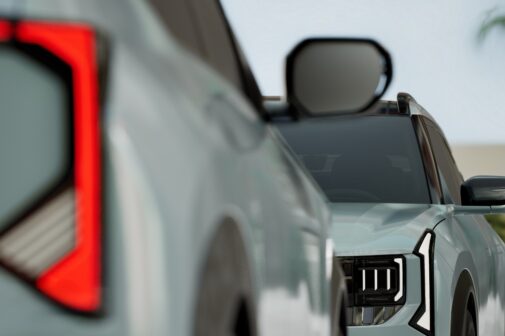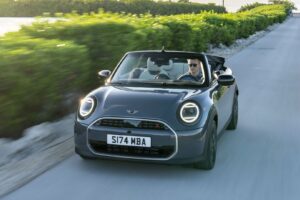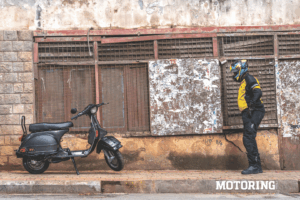When does a trend become a pattern? A constant set of trends that become the norm tend to set the pattern. It’s what economists and policy makers prefer, since it can be easily spotted and studied, while market forces gravitate towards it for it means quicker decision making.
The series of upward trends by Hyundai in recent years have meant that they are now in a pattern phase. Take one well-built, well-executed car. Swathe it with features and provide it at a price that seems justifiable. Support it with good after-sales service and decent resale values, and you have a spate of success stories. The Grand i10, Xcent and Elite i20 and its variants have struck a chord with customers. The i20, in fact, has gone on to become the quickest-selling car in India, with the first 100,000 cars sold in just 11 months, a new record.
That has, in a way, set the ‘pattern’ for Hyundai’s next launch, the Creta. Sure, the name is a bit of a stumbling block, but the car isn’t. It’s a bit of a mini Santa Fe on the outside, especially the way it looks up front and from the side. The rear consists of new-age, wraparound tail-lamps that don’t exactly look well designed. The tailgate is a sore point with a fair amount of slab sidedness.
On the inside, the Creta is spacious and well built. The design is typically Hyundai with lots of well-finished surfaces and textures. Here, too, the resemblance to the Santa Fe is omnipresent, with the vertical air vents and the central stack. Like other Hyundais, it’s well loaded with AC vents at the rear, six airbags and ISOFIX points on the top variant as well as ESP on the manual 1.6 top-end SX. A pretty well-stocked audio unit with all kinds of connectivity and GPS as well as auto climate control is on offer on the SX. Four trims, the Base, S, SX and SX (O) are on offer. The top trims, which we drove on the test track come with 17-inch tyres shod on alloy wheels, with the spare wheel being an alloy wheel, too. In terms of equipment, there is little that Hyundai has skimped on.
The powertrain options are familiar and plenty. A petrol 1.6 with 121 bhp from the Verna is on offer with a 6-speed manual as standard. Even the 1.4 CRDi diesel with 90 bhp comes with a 6-speed manual. The car we drove was the 1.6 CRDi with both 6-speed manual and 6-speed auto, the latter a first in segment on a diesel. This engine is probably going to be the pick of the range, thanks to its 126 bhp on offer. For now, ESP is offered only on the top-end diesel manual, while there is no all-wheel-drive version for the moment.
Based on a front-wheel-drive platform, a few things become apparent once you are behind the wheel. Refinement and general NVH levels are well controlled, more so on the manual than auto. Overall fit and finish seems to be of a high order and the car feels tight, though this was on a perfectly-paved track so final comments are reserved for a full-fledged road test. What is impressive is that torque delivery from
1800-4000 rpm is clean and doesn’t dip. There is turbo lag, but that is masked at low rpms in higher gears by the ratios. The manual gearbox is easy to use, the clutch action is light and the overall driveability is pretty good.
The big revelation is the automatic. Shifts are seamless and the way the car picks up pace is commendable. Performance characteristics of the Creta are more in line with the Mahindra XUV5oo rather than the Renault Duster. What it doesn’t have is the Duster’s sorted dynamics. There is body roll around corners and the steering lacks feel, although these are relative to the Renault and not other Hyundais from whom this is a step forward. In fact, the overall dynamics are even better than the big brother Santa Fe, which had the best dynamic package of all Hyundais by far.
We’ll wait to give you a detailed report of the Creta once we get access to the car for a complete road test, but for now, the first impressions are very good indeed. And Hyundai will hope to maintain this pattern for sometime to come.
AUTODATA
Hyundai Creta SX
POWERTRAIN
Displacement: 1582cc, I-4, diesel
Max power: 126 bhp@4000 rpm
Max torque: 26.5 kgm@1900-2750 rpm
Transmission: 6-speed MT/AT
STEERING
Type: Rack and pinion with electric assist
Turning radius: NA
SUSPENSION
Front: McPherson struts with coil springs
Rear: Torsion beam with coil springs
BRAKES
(F/R): Discs/drums
TYRES
(F/R): 205/65 R16
DIMENSIONS
L/W/H (mm): 4270/1780/1630
Wheelbase: 2590 mm
PRICE (est): Rs 12.68-13.58 lakh, ex-showroom, Delhi

















